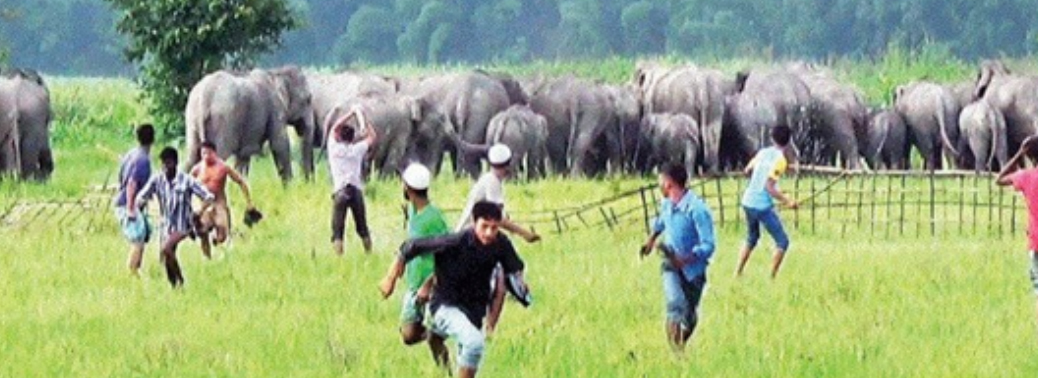
An Unbearable Spectrum of the Human
June 6, 2021: Canada held its breath as the headlines of 20-year old Nathaniel Veltman driving his truck into a Muslim family at an intersection flashed on news stations. The premeditated attack killed three adults and a teenager, leaving its sole survivor, a 9-year-old, in critical condition. Mark Veltman said it was a “shock” to find out what his son had done, while Nathaniel’s coworkers called it “unexpected.” Nathaniel had been close with a coworker named Arman Moradpourian, who had been raised Muslim. Arman testified to Global News that he had never been treated differently by Nathaniel for his faith.
Chrystia Freeland, the Deputy Prime Minister of Canada, called it “shocking news,” while Canada Public Safety Minister, Bill Blair, issued a statement saying Canadians “should remain shocked” so that they may recognize the “racism, hatred and islamophobia” that still exist in the country. Would it be equally shocking if Canadians knew the attack had been preceded by at least nine hate-motivated assaults across Edmonton and Calgary, most targeted at Black Muslim women? Would it still be shocking if Canadians knew that less than a week following the London attack, an Edmonton woman, black and Muslim, was attacked so viciously she had to be hospitalized? Or that in the same month, two Muslim women in St. Albert were assaulted at knifepoint? Perhaps the most shocking revelation will be that the 2022 year opened with yet another attack on a Black Muslim woman, along with her children, on the day of New Year’s. Why is anti-Muslim racism so shocking when it is seemingly a reality many Muslim women of color live with every day?
***
My first “reckoning” of racism started in first grade. My class was playing freeze tag in the gym; all around me, my peers chased each other tirelessly. I noticed one girl, who had been tagged, sitting impatiently on the floor, looking around in a clear plea to be freed. Feeling empathetic or perhaps wanting to play with her, I ran up and reached my hand out to touch – “free”- her.
She jerked away from my touch, cradling her hand to her chest, and yelled at me not to touch her with an expression of utter disgust etched onto her face. I had never paid attention to skin color before, but in that moment, I was acutely aware of the dark brown shade of my skin. Why had that little girl reeled away from my touch with such force—with anger in her voice, uncertainty in her eyes, and fear locked into the contained space where she protected her hand?
In adolescence, my epiphany of the force called anti-Muslimism racism began. I was waiting at the bus stop when, from a car driving by, the driver rolled down the window and yelled Whore. At first, I was confused and looked around me, but the realization that I was the only person at the bus stop forced me to acknowledge that his word had been directed at me.
It was a different confusion than that in elementary; this time, it was not my dark skin that was being put on display, but the hijab on my head. It was a new source of anxiety, the same feeling the Afzaal family was forced to bear in their final moments before Nathaniel robbed them of their lives.
Most people probably believe the older you get, the more you understand, and the less confusing things are. I would have believed it, too, were my experience not the opposite. As I entered adulthood, it became harder to label what I was experiencing, to distinguish between different systems of prejudice. The lines separating two previously different concepts, racism and anti-muslim, began to blur and a new variable entered the equation: womanhood.
I could no longer tell if the father who had watched me intently in the library, as I looked at the books near his daughter, was readying himself to protect his daughter from a black person or a Muslim. Or both. When I’m looking over my shoulder outside, I don’t know if I am protecting my hijab from being ripped off my head, my skin color from being attacked, or simply being wary because I am a woman. Maybe the answer is all the above.
***
In Citizen: An American Lyric, Claudia Rankine examines similar experiences. A little girl, 12, cheats off her exam paper regularly, but the teacher does not notice. Rankine muses that perhaps the teacher “never actually saw [her] sitting there” (20). She recounts several incidents of microaggressions by her peers and friends, subtle jabs aimed to reduce the value of her colored person and wonders why they thought their words were appropriate to say to her. It dawns on her that it is because they do not see her there, in front of them, in her blackness (52).
It is not that they cannot see her, but that they will not. In a classroom of white children or a room of white peers, Rankine alone stands out, “graphite against a sharp white background” (73). She “disrupts” the white stillness, obstructing the familiar view, and it makes them uncomfortable. This is not what they are accustomed to, not their world. She does not belong in their world, drawing a shadow over the white space they have grown up in. What to do, then? Their solution is simple: ignore the obstacle. If they refuse to see her, she cannot blight their world. They simply look past her, to where those who look like them, who are familiar and comfortable, exist.
Rankine also considers the public’s reactions to tennis player Serena Wiliams’ blackness on a previously white tennis court. Unable to stand the black body standing in the historically white background, umpires like Mariana Alves and Sharon Wright attempt to remove her by making bad calls against her. It is no longer possible to simply ignore and pretend they do not see her. The calls serve as thinly veiled attempts to erase her body from their space.
The umpires’ calls are no different from the method chosen by Nathaniel Veltman to erase the colored bodies standing in front of his previously perfect white world. It is only that Nathaniel took it a step further by coldly planning and calculating a way to ensure four out of five of the family members will never be able to “obstruct” his space again.
But Nathaniel had been on good terms with his Muslim coworker, Arman. What was the difference? The difference, perhaps, was that Arman did not wear a hijab on his head. Arman probably wore clothes that resembled Nathaniel’s clothes: blue jeans and colorful shirts. Arman’s appearance probably allowed him to exist in the exclusive, white space of Nathaniel’s world. It did not intrude or make him uncomfortable.
In stark contrast, the hijabs that the women of the Afzaal family wore, which proudly proclaimed their faith, and the shalwar kameez they donned over their bodies, carrying the culture of their Pakistani roots, splashed sudden color in the white background of Nathaniel’s mind. He was forced to recognize their visible Muslim and Pakistani identities. Perhaps the sudden “intrusion” enraged him.
***
Why do the bodies of colored, hijab-wearing women make those like Veltman, Wright and Alves uncomfortable? Why do they not fit into their world despite being human like they are? A better question might be: are they human to them? This is the question raised in Zakiyyah Iman Jackson in On Becoming Human: Matter and Meaning in an Antiblack World. Jackson questions the ontology of black bodies within Eurocentric humanism, and where they fall on the scale of “human.” She points out that there has always “historically been a persistent question regarding the quality of black (ened) people’s humanity” (Jackson 1), a question of human-animal distinction that many African writers address in their works through “a plea for human recognition” (1). Many of these writings cite the reasons behind anti-blackness as the ideas promoted by Eurocentric cultures and media that black people are savages, animalistic, and inferior to the civilized white race (2). There is an “implicit assumption” (13) that receiving this recognition will protect black people from racial violence. Jackson takes a different approach by arguing that the recognition of black humanity is precisely the driving force behind antiblackness and, consequently, violence on the black female body. Recognition of black and female humanity is not denied or excluded but rather “weaponized” (13) through a conception of humanity that is fundamentally anti-black. For Sylvia Wynter, the black female body is not so much excluded from humanity but foundational to it as its antithesis, and as a symbolic representation of the lowest form of “human.” Jackson establishes that violence is endemic to the recognition of black humanity, and acts as an “alibi” (13) to subject and reduce the black female body through.
Historically, we see this discourse in the “invention of race,” which John Samuel Harpham methodically summarizes in his review essay of Henry Gates and Andrew S. Curran’s book, Who’s Black and Why? Harpham traces the first attempt to create a racial classification system on the basis of skin color to French traveler and physician François Bernier in 1684. Bernier proposed a “new division of the Earth” into different “races of men” based on their physical appearance (Harpham). Bernier’s proposal did not gain traction, but the ideas he put forth were increasingly shared by the European public, who fixated on the appearances of immigrants from sub-Saharan Africa and questioned their origins. Their curiosity eventually resulted in the creation of an essay contest by The Bordeaux Royal Academy of Sciences in 1739 that offered this writing prompt: “what is the cause of the Negro’s dark skin and hair texture?” While this was the published prompt, since all its entries relied on Biblical interpretations of race and humanity, the true and more accurate question the Academy posed was, “what is the cause of the degeneration of Black hair and Black skin?” Harpham explains that their implication was the “purported change in color” from white to black, adding: “they fully intended the implication that this had been a change from better to worse.”
Both Bernier and the essay entrants recognized the humanity of black people, as Bernier even suggested they be one of the “races of men.” However, in recognizing their humanity, they are able to reduce them to a subclass of humans inferior to white humans like themselves. The wording of “degeneration” implies a descent, and the strict “scale” between white and black draws a picture of white civilization occupying the highest level and black citizens residing at the very lowest point of humanity. It is by outlining this scale that the Bordeaux Royal Academy was able to oversee the transportation of over 37,000 enslaved Africans through the Compagnie Perpétuelle, a trade conglomerate the Academy had commercial ties with. The Academy’s ships alone carried 2000 Africans across the Middle Passage in the same year that they opened their essay competition once again with the same theme. No mention of slavery was made by either the Academy or entrants in that year’s competition, but as Harpham says, “none seem to have believed that they needed to decide upon the cause of blackness in order to continue to enslave black persons.” The recognition of enslaved Africans’ humanity did not “protect” them from violence at the hands of the academy or its entrants, but simply served as a means through which they could distort the value and person of black people to continue advancing antiblackness.
***
Did Nathaniel Veltman view the five individuals of the Afzaal family as human? The answer is undoubtedly yes. In order to recognize and view their Muslimness and Pakistani identities, he had to first recognize them as human. It is precisely his recognition of the family as human beings that fueled his fervor to erase them and to subject them to irrevocable violence. By highlighting their humanity, he weaponized it to further “other” them, to label them as his “antipodals” (Jackson 13) that represent the rock-bottom of humanity, and thus, justifies (through this alibi) his erasure of them.
The attacks against black Muslim women across Canada were largely unplanned and followed a common pattern. A white man or woman would be mindlessly attending their day, comforted in the blissful background of individuals who look like them and talk like them. Suddenly, an “other” will enter their field of vision and shatter the imaginary walls they had constructed their tolerance and comfort around. An “other” that does not look like a perfect reflection of themselves, who stands on the opposite side of the human spectrum and threatens their top position colored with purity. The hijab is the trigger. They snap. They attack the object of their discomfort, the object that trampled over the imaginary space that they believed Edmonton, or Alberta, or perhaps even all of Canada, operated within. Amidst these attacks, which continue to resurface as recent as January 2022, Jackson poses the question: “If being recognized as human offers no reprieve from ontologizing dominance and violence, then what might we gain from the rupture of “the human”
By: Asma Rahmatalla
Write and Win: Participate in Creative writing Contest & International Essay Contest and win fabulous prizes.


